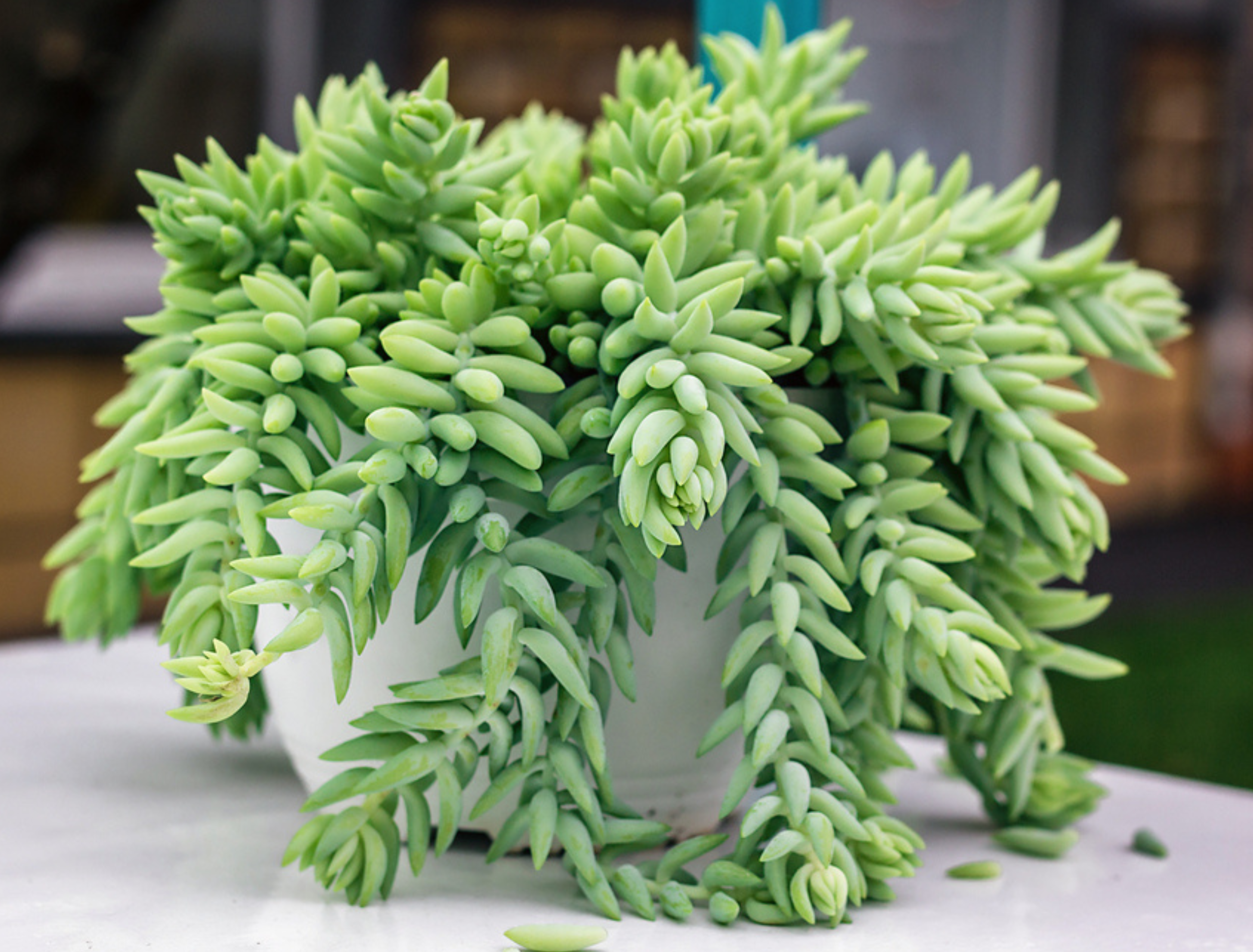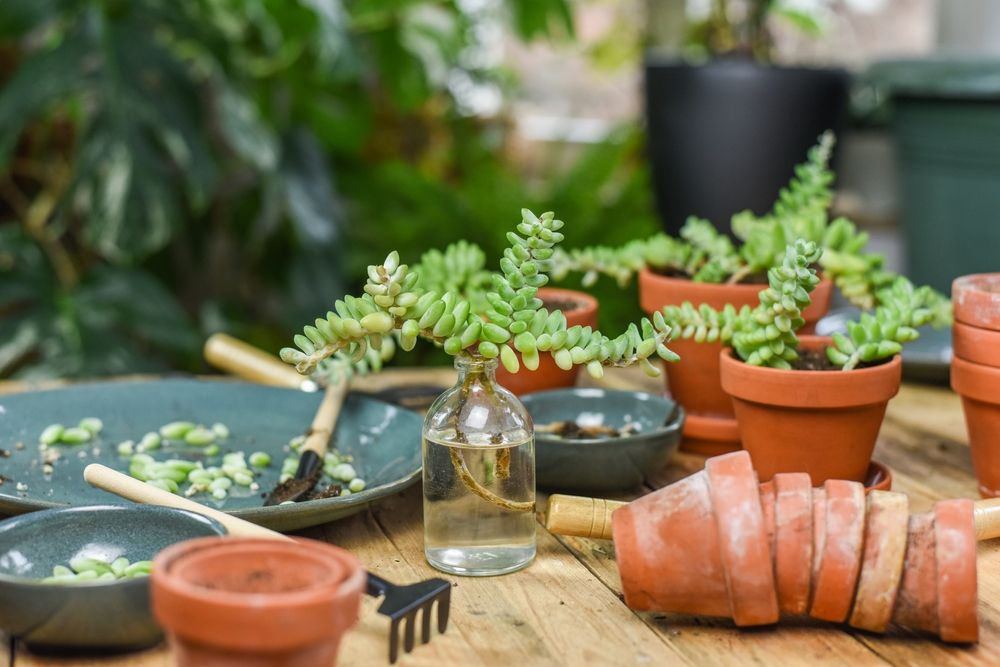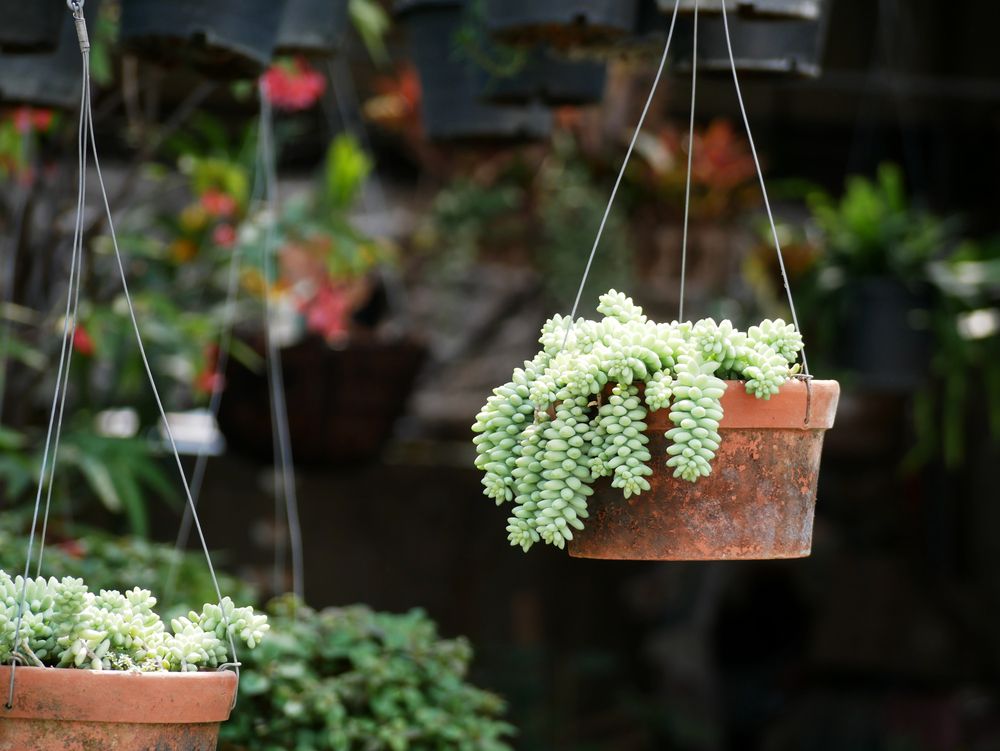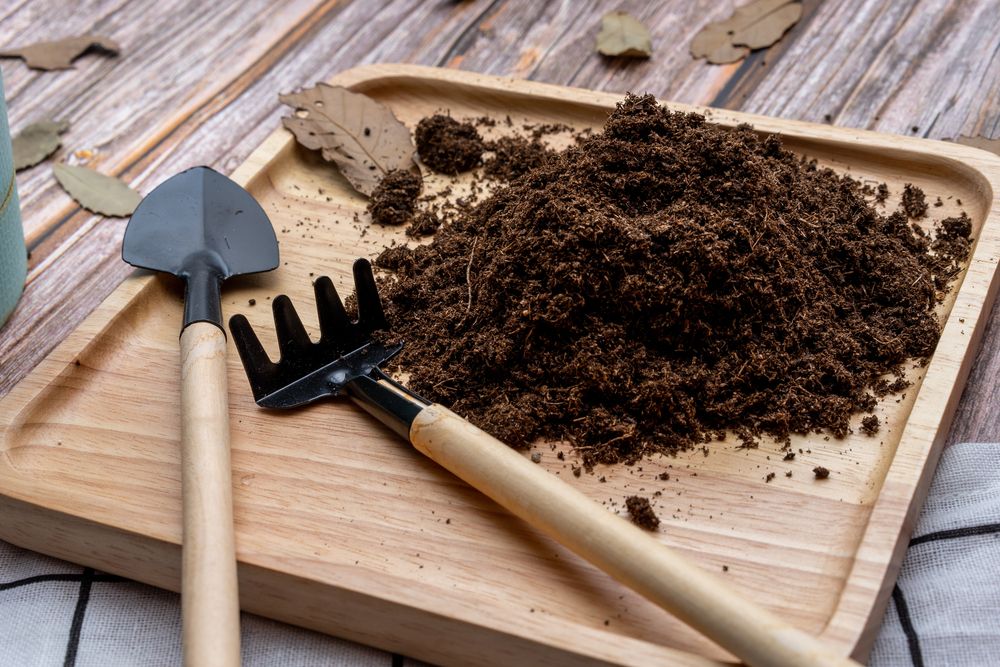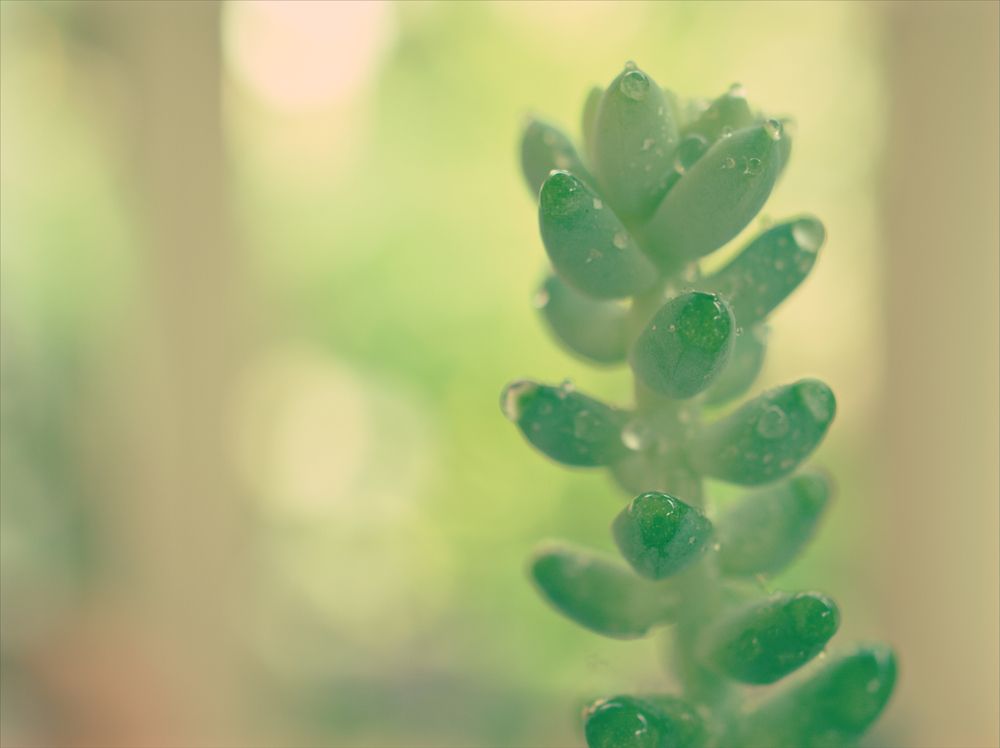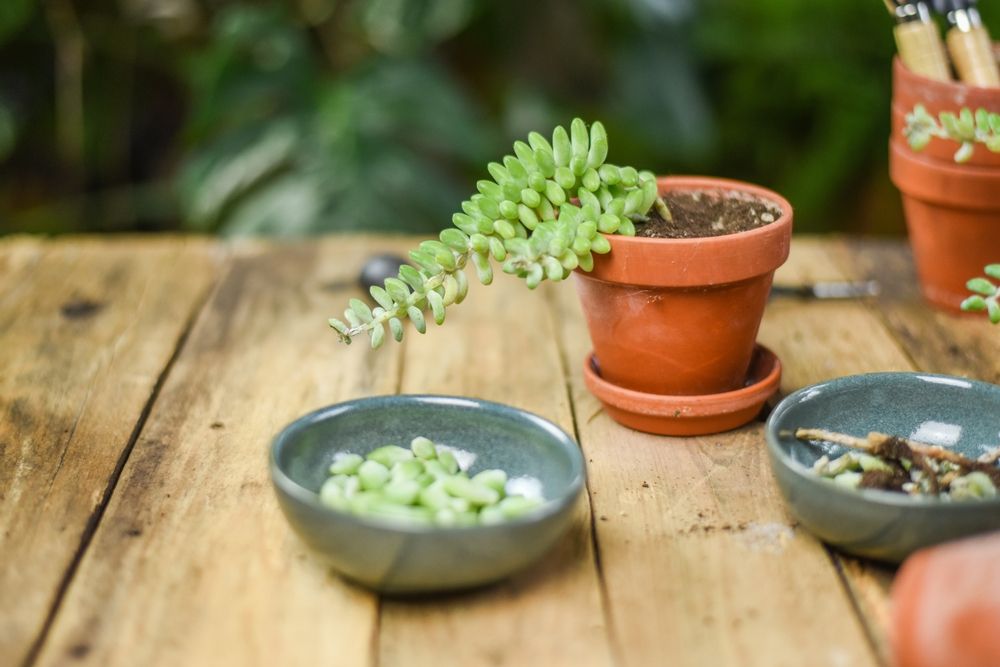Burro's tail succulents (Sedum morganianum), also known as donkey's tail, are unique additions to your houseplant collection. The lengthy cascading stems, covered in plump, teardrop-like silvery-green leaves, are perfect for hanging baskets and shelves. They pair well with dark green plants, including philodendron micans, holiday cactus, and the bird of paradise.
While they are beautiful, the plants are sometimes difficult to care for because they are prone to overwatering and sensitive to the touch. If you've been dreaming of adding them to your collection but aren't sure where to start, you're in luck. Learn everything there is to know about lighting, placement, potting, and watering to grow a happy and healthy burro's tail succulent.
Tools You'll Need
Image credits: denise1203 via Shutterstock
To ensure you provide your plants with the proper care, there are a few tools to gather. Check out the essentials below.
- Sunlight or grow light
- Pot with drainage
- Grow light
- High-quality soil
- Fertilizer
For propagation, there are a few more things you'll need to gather, though this is optional.
- Sharp scissors
- Well-draining potting media
- Small 2-inch pot with drainage
- Water
- Plate
- Mister bottle
How To Care for Burro's Tail
Burro's tail succulents are sweet but delicate, so attentive and mindful care is essential. With that said, once you're in the groove, caring for these succulents is easy.
Light and Placement
Image credits: honeymonster via Shutterstock
Burro's tail succulents prefer bright indirect light, whether they are situated indoors or outdoors. It is best to place them in locations with eastern, southern, or northern exposure where they will receive more than six hours of daily sun. A southern window is best for indoor plants. Keep them away from west-facing spots as the afternoon sun may blast them.
When deciding on a placement, keep in mind that burro's tail plants are sensitive and easily drop when touched. While this is great for propagation, it can affect its appearance. To protect the succulent, keep it in a hanging basket, on a shelf, or in a window box.
Pro Tip: If you can't find a spot with enough light, you can supplement with a grow light or an LED lightbulb nearby.
Potting, Potting Media, and Fertilizer
Image credits: keadtisuk poonyaprayour via Shutterstock
When it comes to potting your burro's tail, there are a few things to consider. First, opt for a pot with drainage holes. Also, terracotta and clay are the best for succulents because they absorb excess moisture. The weight of these pots, in comparison to plastic, is also a good counterbalance for the weighty succulent leaves.
Well-draining, sandy, or loamy soil is essential for keeping these plants alive. Soil that holds too much moisture can cause root rot. A mixture of peat and perlite will do just fine.
Burro's tail, like many plants, goes through periods of dormancy. The succulents are in active growth from spring through fall, and a monthly application of a liquid fertilizer encourages new growth. During winter dormancy, you can drop the feeding schedule once every three months.
Water, Temperature, and Humidity
Image credits: Little daisy via Shutterstock
Burro's tail is heat and drought-tolerant, but it doesn't handle too much cold weather or water very well. Since the plant stores water in its plump leaves, it generally only requires watering once per month. Still, check your plant's soil before watering.
To test, insert your finger about an inch deep into the soil. If it's dry, it's time to water. If not, wait a little longer and check again. When watering, fully saturate the soil to ensure the roots get enough water. Remember that overwatering the plant can cause the leaves to fall off and the plant to die.
Average indoor temperatures, around 68 to 72 degrees Fahrenheit, are perfect for the plant. Keep the succulent away from drafts or heat sources to avoid damage. In terms of humidity, the burro's tail likes things on the drier side. Put your plant in a bedroom or living room rather than a bathroom.
Pro Tip: Shriveled or wrinkled leaves are a sign you've waited a bit too long to water. If you notice this, water the plant immediately.
Pests and Propagation
Image credits: denise1203 via Shutterstock
If you'd like to add a few more succulents around your house or share with friends, you can propagate burro's tail stems or leaves. To propagate a cutting, snip a 3-inch stem from the plant. Remove leaves from the bottom 2 inches and plant in a mixture of peat and perlite in a 2-inch pot.
Keep the mixture moist but never wet and in bright indirect light over the next few weeks. Check occasionally for roots and repot into a 3-inch pot once the roots are about an inch long.
To propagate leaves, gather up any leaves that have fallen off. Lay a moist potting mix on a place or wide container and scatter the leaves on top, cutting the end down. Keep this in bright indirect light and moisten with a mister bottle. When the leaves grow roots and several new leaves, transplant them into a 2-inch pot.
Scale insects and mealybugs sometimes find their way onto burro's tail, with a keen interest in the sap of the succulents. Prevent this issue by isolating new plants, inspecting your plants regularly, and using clean soil when repotting.
Grow On!
While burro's tail succulents require the proper placement and watering routine, they are generally easy to care for once you've got them figured out. A room temperature, dry location that is high up without too much direct sunlight is the perfect spot. And when it comes to watering, a light hand is best. Plus, it is super simple to propagate and create new plants!
Do you have any tips for caring for burro's tail succulents? Share in the comments below!

